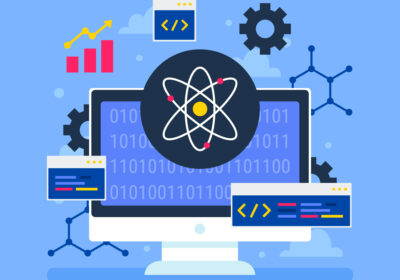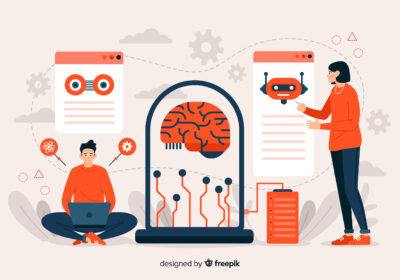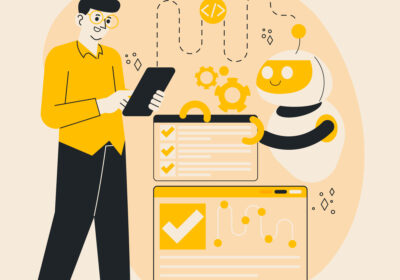Legacy applications can feel like anchors—holding businesses back from innovation, scalability, and efficiency. Built on outdated tech stacks, these systems often struggle to meet modern demands like cloud integration, real-time data processing, or seamless user experiences. But here’s the good news: you don’t have to scrap them entirely. Modernizing legacy applications can breathe new life into your operations, saving costs and boosting competitiveness.
At Verbat, we’ve helped countless businesses transform their aging systems into future-ready solutions. In this guide, we’ll walk you through a step-by-step approach to modernize your legacy applications—without the headaches. Let’s dive in!
Why Modernize Legacy Applications?
Before we get to the “how,” let’s address the “why.” Legacy systems—think monolithic architectures or software running on unsupported platforms—pose real risks:
- Cost Creep: Maintenance eats up budgets as old tech becomes harder to support.
- Security Gaps: Outdated systems are prime targets for cyber threats.
- Lost Agility: Slow, inflexible apps can’t keep up with market shifts or customer expectations.
Modernization isn’t just an upgrade—it’s a strategic move to future-proof your business. So, how do you get started?
Step-by-Step Guide to Modernizing Legacy Applications
1. Assess Your Current Landscape
You can’t modernize what you don’t understand. Start by auditing your legacy applications:
- What’s working? Identify core functionalities worth keeping.
- What’s broken? Pinpoint pain points like slow performance or compatibility issues.
- Business Goals: Align modernization with your strategic objectives—think scalability, cost reduction, or better UX.
Pro Tip: Use tools like application performance monitoring (APM) or consult with experts (like us at Verbat!) to get a clear picture.
2. Choose the Right Modernization Strategy
There’s no one-size-fits-all here. Pick an approach based on your budget, timeline, and goals:
- Rehost: Move apps to the cloud “as-is” for quick wins (e.g., lift-and-shift to AWS or Azure).
- Refactor: Optimize code and architecture for better performance without a full rewrite.
- Replatform: Swap out outdated components (like databases) for modern alternatives.
- Rebuild: Redesign from scratch if the system’s too far gone—but weigh the cost vs. benefit.
- Replace: Swap legacy apps for off-the-shelf solutions if custom builds aren’t critical.
Not sure which fits? Verbat’s team can analyze your setup and recommend the sweet spot.
3. Prioritize Cloud Adoption
The cloud is the backbone of modern apps. Migrating legacy systems to cloud platforms offers:
- Scalability to handle peak loads.
- Cost efficiency with pay-as-you-go models.
- Built-in security and updates.
Start small—shift a single module to a cloud environment like Microsoft Azure or Google Cloud—and test the waters before a full migration.
4. Embrace Microservices Architecture
Monolithic legacy apps are rigid. Break them into microservices—smaller, independent components that communicate via APIs. This shift:
- Speeds up development cycles.
- Makes updates easier (no system-wide overhauls).
- Boosts resilience—if one service fails, the rest keep running.
Yes, it’s a heavier lift upfront, but the long-term agility is worth it.
5. Integrate Modern Tools and Automation
Upgrade your tech stack with:
- DevOps Practices: CI/CD pipelines to streamline updates.
- AI & Analytics: Add predictive insights to legacy workflows.
- Automation: Replace manual processes with bots or scripts.
For example, integrating an API-driven CRM into a legacy ERP can unlock real-time customer data without a full rebuild.
6. Test, Iterate, and Train
Modernization isn’t a “set it and forget it” deal.
- Test Rigorously: Validate performance, security, and user experience post-migration.
- Iterate: Fix bugs and optimize based on feedback.
- Upskill Teams: Train staff on new tools to maximize adoption.
Partnering with a tech expert like Verbat ensures smooth testing and a tailored training plan.
Common Pitfalls to Avoid
- Rushing In: Skipping the assessment phase leads to costly missteps.
- Over-Engineering: Don’t build more complexity than you need.
- Ignoring Users: Modern tech flops if employees or customers can’t use it.
The Verbat Advantage
Modernizing legacy applications can feel daunting—but it doesn’t have to be. At Verbat, we bring decades of experience in digital transformation, offering end-to-end support from assessment to deployment. Whether it’s cloud migration, microservices, or custom refactoring, we’ve got you covered.
Conclusion: Start Small, Win Big
You don’t need to overhaul everything overnight. Pick one application, test a modernization approach, and scale from there. The result? A leaner, smarter, and more competitive business ready for whatever’s next.
Ready to modernize? Contact Verbat today, and let’s turn your legacy systems into your greatest assets.





